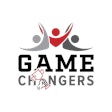Last week, U.S. Soccer announced that its five-year-old Development Academy is adopting a 10-month regular-season schedule stretching from September through June, thus precluding hundreds of youths from competing for their high school teams.
The Development Academy launched in October 2007 as a bold new means of grooming U.S. youth soccer talent to eventually boost the nation's standing on the sport's world stage. But what began as 64 U-16 and U-18 club teams playing an eight-month schedule has gone too far for some observers. "If they were going to target the top 60 or 80 or even 100 kids in an age group and work to develop them, maybe that's something I could understand," Mike Gauvain, head boys' soccer coach at Chaminade High School in St. Louis, told the St. Louis Post-Dispatch. "But the scope of this is just too big. The Academy system has something like 72 teams nationwide; there's just no way there are that many elite-level players out there for a system like this."
Added Terry Michler, head coach at Christian Brothers College Prep in St. Louis, "They're going to try to sell this to players and their parents as the path to college or professional soccer, and that's just not true. If you're a top player, a truly elite player, you're going to be found, no matter where you play."
From the beginning, debate within American soccer circles has centered around the best approach to development - competition versus training. A high school soccer schedule may subject athletes to four games a week, while the Academy's longer season, which is more in line with the approach favored by most successful soccer-playing nations, allows for extensive practice time between games. Michler, the winningest high school coach in the U.S., has written that AB in the fall of 2007. "The best analogy I've heard is, 'All exams and no studying do not the student make.' Well, all games and no training do not the soccer player make."
At that time, Tony Kees, coach of Chicago Fire PDA, a Major League Soccer-affiliated club team, felt the high school game was in danger. "The decision to forego high school play is tough on kids," he told AB. "A club environment can't duplicate the high school environment - the camaraderie, walking through the hallways with athlete status, wearing school colors, having the student body come out to your games." He added, however, that his club players enjoy benefits all their own. "These kids will be able to rub elbows with the pros on a daily basis. They are going to have the best facilities and the best amenities. Everything the pros get, our kids are going to get. That can't be duplicated, either."
Gauvain told Post-Dispatch writer Joe Lyons that he wouldn't trade his own high school sports experience for anything, adding of his current players, "Being part of the soccer team at Chaminade is more than just soccer. It's about being part of the school community and doing what you need to do - keeping your grades up, showing up on time, being a good school citizen - in order to be eligible to stay part of the soccer team."
Dale Schilly, director of youth development for the Academy-affiliated St. Louis Scott Gallagher Metro program in Illinois, told Lyons that, while controversial, the decision by U.S. Soccer should be kept in perspective. "The thing to remember," he said, "is that the players and their parents will make the choice and that this will only impact a small percentage of players."





































